Around Mirfield Today
Ginnels and Snickets of Mirfield
Definitions:
A ginnel is a path between high walls or buildings.
A snicket is a path between more open areas usually bordered by hedges or fences.
Mirfield has a network of ginnels and snickets providing shortcuts for anyone travelling by foot. You can go from the bottom of Pinfold Lane to the police station in Knowl Road and only have Parker Lane to cross or from Towngate to Westfield Road up the side of Castle Hall School (the former Grammar School) although the latter part of this is through an estate of houses where it used to be fields. You can get from Kitson Hill Road to Leeds Road, near the White Gate Inn, or take an earlier branch going right to Slipper Lane.
There are several shorter links such as Old Bank corner to Quarryfields and Balderstone Hall Lane to different parts of Crossley Lane. Another route using short connecting snickets would be Hepworth Lane to Wellhouse Lane then down the side of the cricket field, across Dunbottle Lane and down Sous Lane to Towngate. You can also link from Sous Lane or Towngate to the previously mentioned route to Westfield Road. There are many others widely used by local people and too numerous to list. There were also many that have disappeared to be replaced by streets through housing estates.
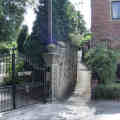 click for larger photo
click for larger photoGinnel, Pinfold Lane
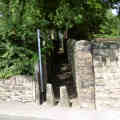 click for larger photo
click for larger photoGinnel, Parker Lane
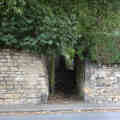 click for larger photo
click for larger photoGinnel, Crowlees Rd
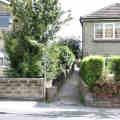 click for larger photo
click for larger photoSnicket, Greenside Rd
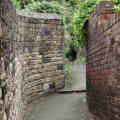 click for larger photo
click for larger photoGinnel, Pinfold Lane
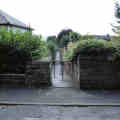 click for larger photo
click for larger photoSink Fence snicket
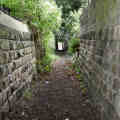 click for larger photo
click for larger photoCrowlees Ginnel
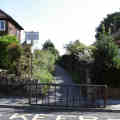 click for larger photo
click for larger photoSnicket, Lockwood Ave
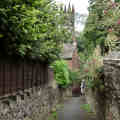 click for larger photo
click for larger photoLooking to Pinfold
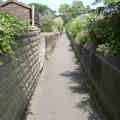 click for larger photo
click for larger photoSink Fence snicket
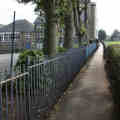 click for larger photo
click for larger photoPassing Castle Hall
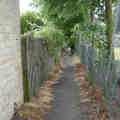 click for larger photo
click for larger photoWellhouse - Dunbottle
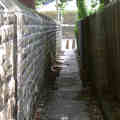 click for larger photo
click for larger photoNear Parker Lane
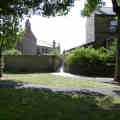 click for larger photo
click for larger photoTo Knowl Road
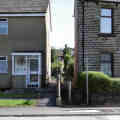 click for larger photo
click for larger photoSnicket, Old Bank
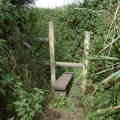 click for larger photo
click for larger photoA rustic style
Dewsbury Reporter, November 2, 1872:
MIRFIELD: ITS BYEPATHS AND NUISANCES.
To the Editor of the Reporter.
SIR,—I have long been a member of the "Anti-poke-your-nose-into-other-people's business Society," and, like Diogenes of old, have dwelt in my tub in blissful obscurity; but I feel compelled, very much against my will, to "take up my pen," as the schoolboys say, "and write a few lines" about certain things that require alteration. There are certain nuisances in existence and byepaths that are a disgrace to this respectable, and what some folk consider well-to-do, parish of Mirfield. I propose from time to time drawing your attention to them seriatim, so that the gentlemen who have been appointed as the Sanitary Committee may, in their peregrination through the parish, have something in their minds beforehand to lead and to guide them.
Chancing to go last Sunday night week to the new parish church, I took the paths through the fields from Eastthorpe Lane; the first thing that struck my attention was the entrance to a field which, I believe, is farmed by Mr. William Thornton. There are three posts put up ostensibly, I should say, to keep cattle out, but really to keep decent people from going through; they are placed so close together and at such angles that it is positively dangerous for certain people to go through; indeed I know of one case where, a few years ago, a premature confinement was brought on, on account of the female passing through one of these stiles, and, indeed, not many yards from this very stile the babe was born dead, and the mother did not live many years after. Passing through this field at its egress into Parker's Lane I had to pass over some iron bars let into the wall as a sort of steps; these bars are about one inch in diameter, and are worn so small in the centre, and so smooth with constant friction, that it requires a person to be a bit of a gymnast in order to steady himself till he tilts himself over. I know one person — and an active man too — who came to grief while getting over this very stile one Sunday, on his return from church, he embraced mother earth, but fortunately a medical man was with him and rendered what assistance he could, but the result of the fall was a very beautiful black eye.
The next thing that took my attention was the state of the "Sunk Fence" which I believe is the nearest by-path to the church. The night was very wet, and one half of this path — that half which is on the level — was entirely studded with miniature pools of water. It is flagged, and I believe the flags cover a drain beneath; some of these flags have got very much dilapidated, and have sunk considerably below the level, and that accounts for the water standing in pools. I managed pretty well in going to church while it was light, but in returning didn't I get a benefit! Talk about going to church to get good! That walk through this precious "Sunk Fence" is enough to drive all the good out of any man. I have heard it said that there are nearly a score of these little pools of water, which, in daylight, if you can stride pretty fair you may dodge, but in the dark that is impossible as I found, splash! Splash! I went into them no fewer than eight times, to the no small detriment of my nether garments; they were quite soaked, and as I was going straight home I managed to avert taking cold by doffing; but how will it be during the winter if the good folk who attend evening service at the church are to sit for two hours in wet hose and shoes. My case was only one. You may multiply it by scores, and many of them delicate females who are not so strongly caparisoned about the feet as men are. I had nearly omitted mentioning the most important thing of all with regard to this particular pathway; about three or four feet from the entrance there is a flag, broken, and a hole right through into the drain large enough for the leg of an adult person to enter. The wonder is that no one has had a leg broken in this said hole, for there is nothing to protect a person after dusk who is not aware of it. I did hear of a young female who had got her foot entangled in it, and was thereby hurt. The question arises who is responsible if any serious accident should happen. Some people say it is private property, some say that it is the duty of the surveyors to keep it in repair. However that may be, perhaps the Sanitary Committee will decide if it is their duty to protect the limbs of the public from dangerous byepaths, as well as their lives from miasma and disease generated through nuisances. I leave the matter for the present in their hands, and having given them enough for one week I shall meanwhile reflect — though having left my tub I shall not resume it till I have told all that is in my mind respecting the byepaths and nuisances that have come under my notice.
Mirfield Reporter, Friday December 20, 2002:
In an article by Laura Smith-Spark it was reported that walkers have won the right, after a
public inquiry, to use a Mirfield footpath that had been blocked off by neighbouring residents
since 1997. The stone-walled footpath starts at the Towngate end of Pinfold Lane then runs
behind the houses, parallel to Pinfold Lane, before jointing up with the ginnel that connects
the lowest point of Pinfold Lane to Parker Lane.
The council, quite rightly, argued that the path had been in use by the public for at least 20 years before the gates that closed it off were erected. I have mentioned elsewhere that I was born at 17 Pinfold Lane in 1940. 17 Pinfold Lane is the house in the corner where the ginnel starts its journey to Parker Lane and this section of footpath which ran along the back of our garden was in common use even then. At that time there was a seldom used back entrance to the Old Rectory with large wooden gates and this path which was more like a cart track in its width led directly to these gates.